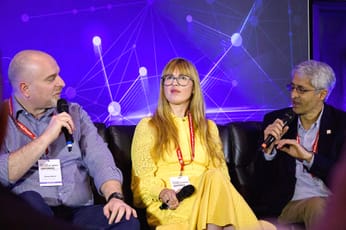 MG Siegler of TechCrunch has published a really fascinating post on his personal blog, responding to the current brouhaha around Mike Arrington, TechCrunch and AOL. I’m less interested in the corporate politics of the debate than I am in just how differently the site operates to traditional journalism businesses:
MG Siegler of TechCrunch has published a really fascinating post on his personal blog, responding to the current brouhaha around Mike Arrington, TechCrunch and AOL. I’m less interested in the corporate politics of the debate than I am in just how differently the site operates to traditional journalism businesses:
> First and foremost, the concept of an “editor” at TechCrunch is essentially just a title and nothing more. Generally speaking, neither Mike nor Erick (TC’s two “co-editors”) are overlords that dictate what everyone else covers. With a few exceptions (mainly for newer writers), no one person even reads posts by any other author before they are posted.
Traditional journalists may be appalled to learn this. But this is a big key of why TechCrunch kicks their ass in tech coverage. We’re fast and furious in ways they can’t be, because they’re adhering to the old rules. Are there benefits to those old rules? Sure. But in my opinion, the benefits of the way we work far outweighs the benefits of the way they work.
This is, from a traditional journalism perspective, tantamount to heresy. But sometimes heresy is the statement that changes the debate and allows new things to happen. The traditional priesthood of journalism will be stoking the fires when they read this:
> Even if it’s just on a subconscious level, each of these authors must know that the future of their business looks a lot more like TechCrunch than The New York Times. Love it or hate it, that’s the truth. It’s inevitable.
Well, perhaps. But the future rarely turns out exactly as the heretics predict, either…
**Update**: Alan’s noticed the same thing, too, and has some interesting thoughts on the [philosophy and finances of the TechCrunch model](http://broadstuff.com/archives/2557-TechCrunch-Lessons-in-Economics-and-Ethics.html).
[](http://www.zemanta.com/ "Enhanced by Zemanta")
 MG Siegler of TechCrunch has published a really fascinating post on his personal blog, responding to the current brouhaha around Mike Arrington, TechCrunch and AOL. I’m less interested in the corporate politics of the debate than I am in just how differently the site operates to traditional journalism businesses:
MG Siegler of TechCrunch has published a really fascinating post on his personal blog, responding to the current brouhaha around Mike Arrington, TechCrunch and AOL. I’m less interested in the corporate politics of the debate than I am in just how differently the site operates to traditional journalism businesses:







